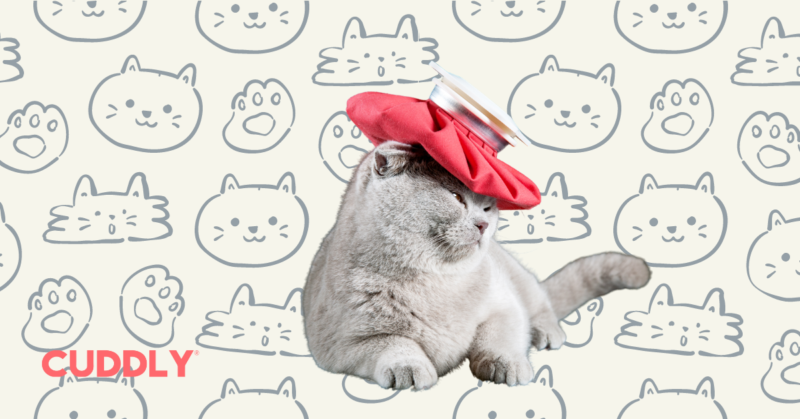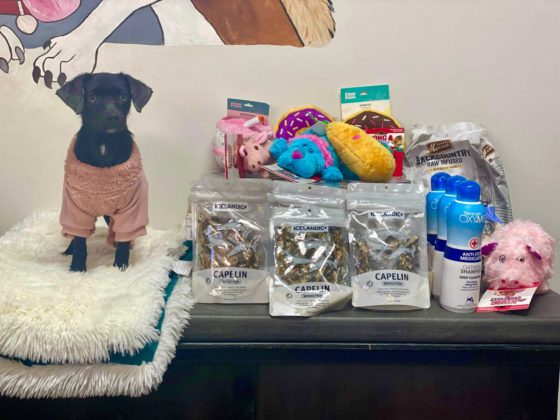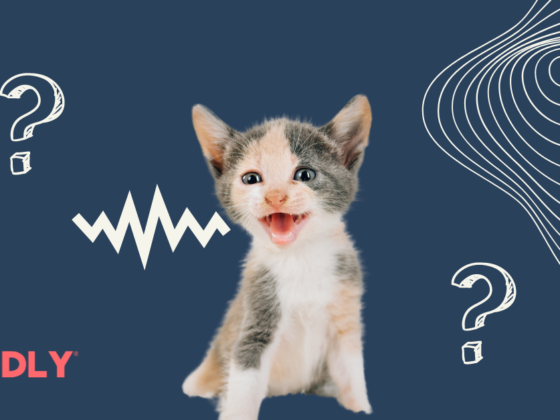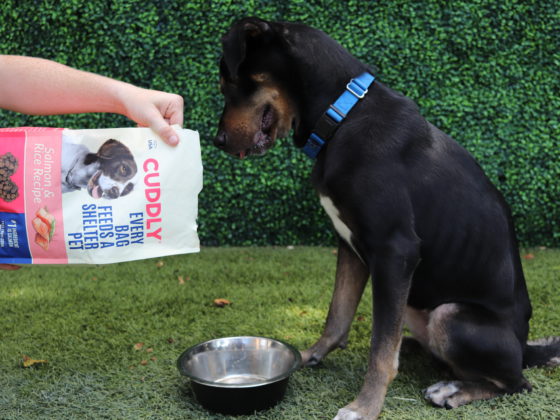Most cat owners see their cats throwing up occasionally without getting overly concerned. It’s often challenging to differentiate regurgitation, vomiting/retching, and coughing whenever your cat throws up. Occasional vomiting may emanate from minor issues, such as you’ve overfed the cat or aggressive playing immediately after a meal.
Have you noticed that your cat has been throwing up frequently recently? Should you overlook it or visit your veterinarian? This article digs into the common causes of throwing up in cats, how to diagnose the underlying problem, and the remedies to stop the throwing up.
Consider with CUDDLY: Why is your cat throwing up?
- Why and how this is happening
- Possible causes
- Solutions
- What to look out for
Why Is My Cat Throwing Up?
We mentioned earlier that it could be challenging to establish the cause of the main reason behind your cat throwing up. It’s crucial that you visit a veterinarian as soon as you notice that your cat has been throwing up more frequently.
Your veterinarian asks several questions to establish why your cat is throwing. These questions include the following;
- Did you switch the cat’s diet recently?
- Have you been using over-the-counter or prescribed pet medication?
- Do you keep your cat indoors or outdoors?
- Has your cat maintained a regular feeding habit?
- Do you keep more cats in your home? Have they been vomiting too?
- Is your cat on any diet or treatment schedule?
These questions stir the veterinarian on the path to establishing the cause of vomiting. The possible causes of throwing up include hairballs and gastrointestinal and non-gastrointestinal causes.

Chronic Vs. Acute Vomiting
Throwing up is classified into two broad categories, including acute and chronic vomiting. Chronic vomiting occurs when the cat’s throwing up follows a regular pattern, such as daily, weekly, or monthly. Your cat throws up once or twice per incident in chronic vomiting.
Acute vomiting happens when a cat that hasn’t been vomiting starts throwing up. This vomiting becomes a matter of concern for you and your veterinarian if it happens multiple times.
The diagnosis, the urgency of seeing a veterinarian, and treatment workup are different for chronic and acute vomiting. For instance, acute vomiting needs urgent and more intensive care unless the cat has vomited a couple of times only. Chronic vomit, on the other hand, doesn’t require an urgent visit to a veterinarian.
You don’t need to take your cat to a veterinarian if it can eat without vomiting and appear comfortable. Visit your veterinarian as soon as possible if your cat vomits more than thrice, refuses to eat, and seems more tired than usual.
Possible Causes Of Your Cat Throwing Up
Several possible causes of throwing up include hairballs and gastrointestinal and non-gastrointestinal causes. These causes can be similar to acute and chronic vomiting, although a few exceptions exist. Here are some of the most common reasons your cat is throwing up.
Common Causes
- Food Allergies: The main food allergens in cats include chicken, beef, and fish. Other ingredients mixed in foods can also cause allergies. Cats exhibiting food allergies require treatment with special non-allergenic diets.
- Parasites
- Foreign Objects Causing Obstruction
- Constipation
- Hairballs
- Ingestion Of Toxins
Disease-Related Causes
- Pancreatitis
- Neurological Disorders
- Feline Infectious Peritonitis
- Kidney Diseases
- Liver Diseases
- Diabetes Mellitus
- Cancer
- Systemic Diseases
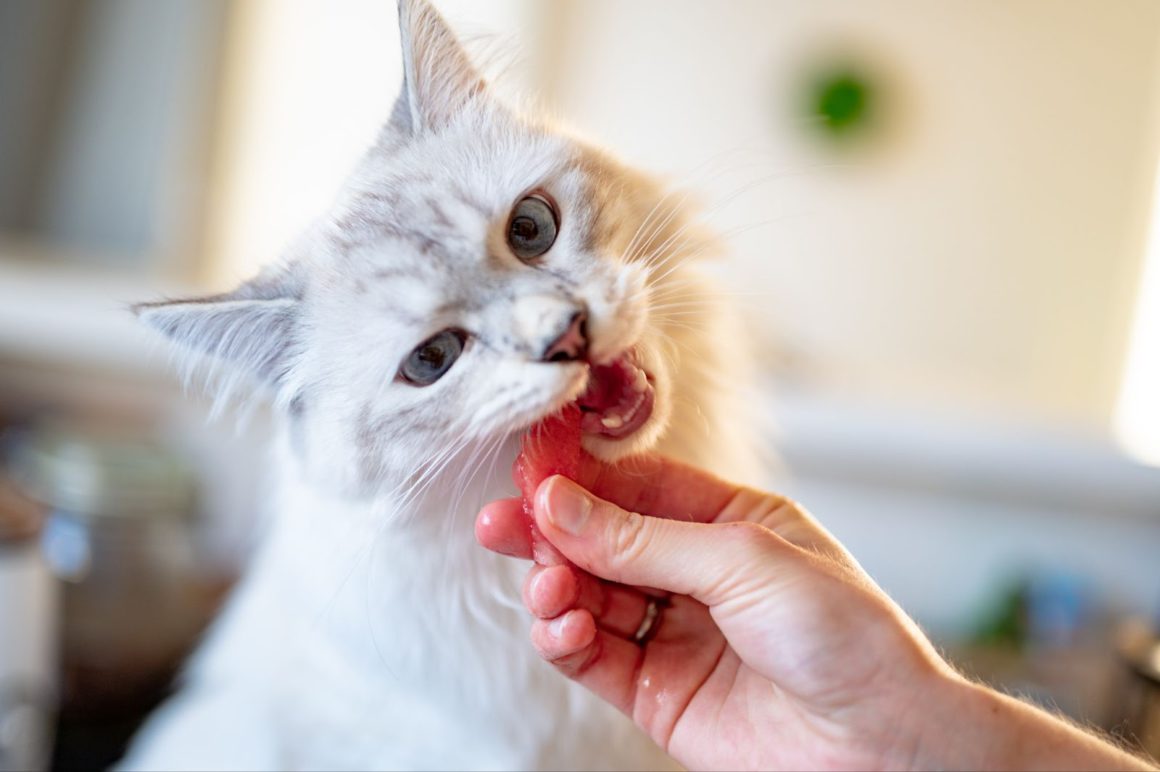
How To Diagnose Why Your Cat Is Throwing Up
It’s essential to call a veterinarian if your cat repeatedly vomits on different occasions for two or more days. We’ve mentioned several possible causes of frequent throwing up in cats.
Your veterinarian will examine your cat’s history, including past and current eating habits, diet, behaviors, and possible exposure to chemicals and toxic substances. The vet may resort to more advanced tests if the diagnosis through physical examination doesn’t yield conclusive results. These diagnostic tests include;
Blood tests: The vet may do blood tests in the laboratory for any evidence of underlying infections, thyroid diseases, liver and kidney problems, and diabetes. These tests offer more clues leading to a successful diagnosis. The blood test is also the most non-invasive method vets use to test for cat allergies.
X-rays: An x-ray may show any stomach or esophagus abnormalities. It’s advisable to give barium to enhance the process of identifying obstructions, ulcers, tumors, and other foreign bodies.
Ultrasound is another diagnostic method vets use to view a cat’s intestines and stomach. Ultrasound helps identify blockages, tumors, and inflammation within the stomach and intestinal lining. Such growths may be the reasons behind your cat throwing up.
Endoscopy: The vet uses an endoscope to view the inner parts of the cat’s stomach. This procedure helps diagnose any problems in the stomach or for obtaining biopsy samples. Biopsy refers to the tissues that can be examined under a microscope to establish any disease’s presence.
Laparotomy: Laparotomy is a diagnostic method also called exploratory surgery that is useful, especially if the vet suspects a blockage or obstruction. This method is a diagnostic and treatment procedure. The vet uses it to examine your cat’s organs in the abdomen during surgery and obtain biopsy samples to determine the cause of vomiting.

What Do Different Types Of Cat Vomit Mean?
You may often want to diagnose the cause of throwing up in your cat using the color of the vomit. Knowing the color of your cat’s vomit is vital as distinct conditions or illnesses cause different colorations in vomit. The following are examples of vomit colors and the most probable cause.
Yellow Liquid
Your cat vomits yellow or bile if her stomach is empty. Such a situation often arises if you feed your cat once in 24 hours, or if your cat is anorexic. Food stimulates the contraction of the gallbladder. An empty stomach causes bile to come into the small intestine and stomach.
Clear Liquid
Clear liquid indicates high liquid content in your cat’s stomach. Your cat may have had too much water if it vomits clear liquid. Several possible conditions may cause your cat to drink excessive water, including kidney disease and diabetes mellitus.
Brown Liquid
Brown color vomit may often indicate the presence of digested blood in the intestinal tract. It’s associated with hairballs, foreign bodies, and ulcerations in the intestines.
Green-Colored Vomit
Green vomit indicates that the substance or food was brought up from the small intestines, as bile turns vomit green.
Blood
Blood shows ulceration or possible irritation on the esophagus and stomach lining due to acid buildup. The presence of blood in vomit may also indicate clotting abnormality associated with toxins and certain diseases.
Mucus
Mucus indicates that the cat isn’t vomiting, but regurgitating. Observe the cat’s patterns to establish if it’s vomiting or regurgitating.
Worms
Cats mostly vomit roundworms. Take your pet to the vet immediately to treat the issue.
Food
The presence of food in the vomit means your cat has overeaten, or it’s nauseous. The cat may also vomit food if a foreign body obstructs the food.
Hairballs
Cats with long hair can vomit hairballs.
White Foam
White vomit indicates possible inflammation of the stomach or intestinal lining.
Other Symptoms To Look Out For
Cats often show other symptoms alongside vomiting. It’s essential to describe the accompanying symptoms to your vet for appropriate diagnosis and treatment. These symptoms include;
Vomiting and Constipation: Your cat can vomit if she has been straining to defecate for days. Constipation causes content buildup in the small intestine causing the cat to vomit.
Vomiting & Diarrhea: A combination of diarrhea and vomiting indicates the presence of inflammation in the stomach lining or small intestine.
Vomiting & Sneezing: Sneezing and vomiting may show that your cat contracted the virus and the presence of a respiratory tract infection.
Should I Be Concerned About My Cat Throwing Up?
Yes, contact your vet if your cat has shown repeated bouts of vomiting for two or three days. Severe or continuous vomiting may indicate a serious condition requiring treatment. Contact your veterinarian if your cat exhibits these symptoms alongside vomiting;
- Loss of appetite Fever
- Lethargy
- Diarrhea
- Fever
- Changes in healthy behavior
How Can I Prevent My Cat From Vomiting?
Monitor your cat and change how you feed them, if they have been throwing up as a result of overeating, or give her enough food. For instance, you can give them more portions frequently than feeding them once daily.
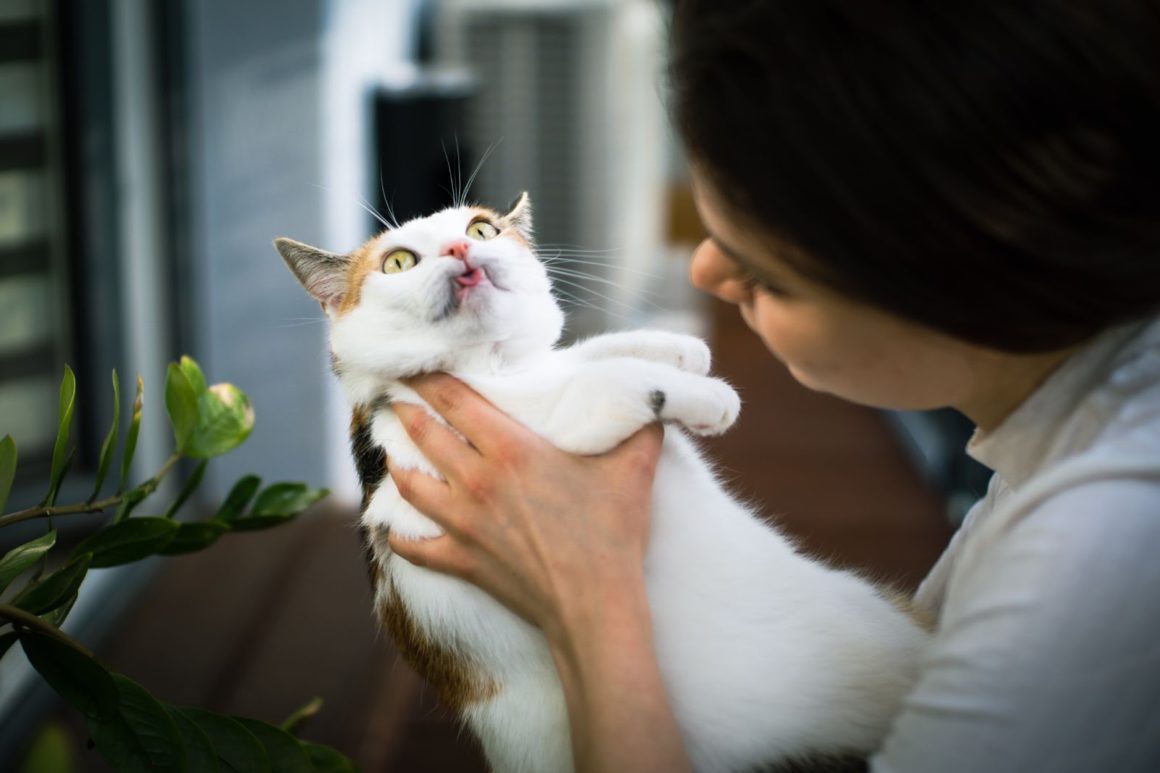
How Can I Help My Cat When It’s Vomiting?
Change your cat’s diet and give her easily digestible foods if she has shown signs of acute vomiting. Some foods you can settle for include Hill’s ID cat food, Royal Canin Gastrointestinal High Energy cat food, or human food such as meat-flavored baby food. Talk to your veterinarian for more guidance.
Medication
The treatment methods vary depending on the cause of vomiting. The vet will diagnose the cat to determine appropriate treatment options. Your vet may recommend the proper blood pressure medication and fluid intake if your cat has kidney diseases. Other conditions, such as hyperthyroidism, require surgery, while food allergies need dietary changes.
Dietary Changes
Change your cat’s diet if the throwing up results from allergies or harmful feeding habits.
Keep A Close Eye On Your Cat
It’s essential to keep a close eye on your cat for any signs accompanying vomiting and share the information with your vet for appropriate medication and treatment.
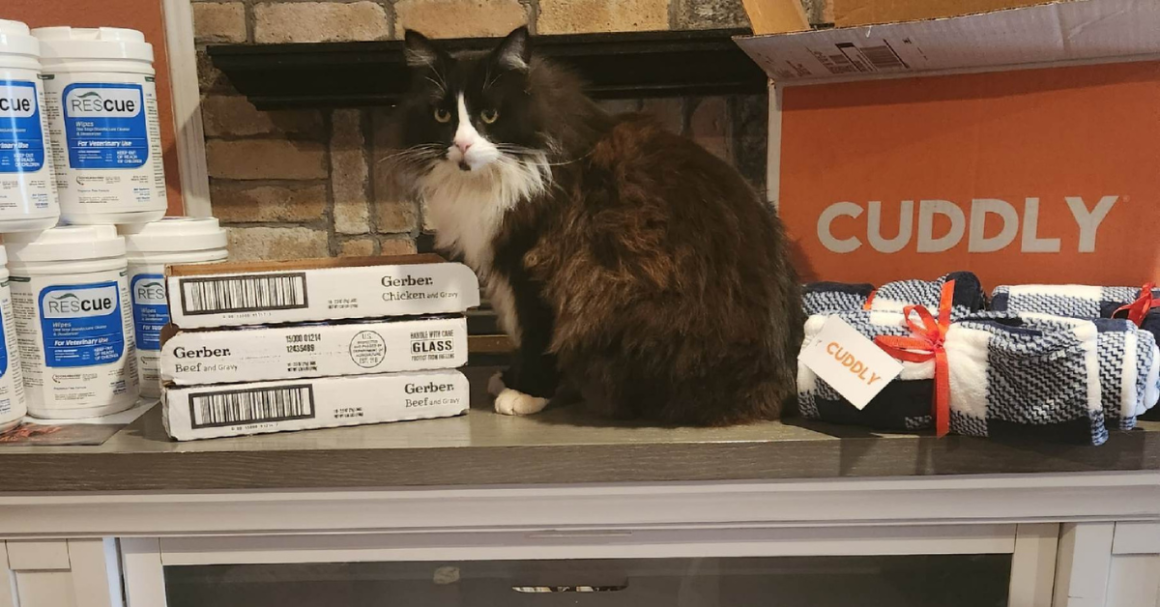
CUDDLY Conclusion: Speak To Your Vet
Do you suspect that your cat is sick because of throwing up? Speaking to a vet helps you to determine the underlying cause of the vomiting and the best remedy to keep your cat healthy. Proper diagnosis allows you to establish the treatment method, including dietary changes, surgery, and other medication.
Our primary goal at CUDDLY is to give all animals a loving home and healthy life by enabling animal creation of animal rescue fundraisers supporting animal care. We’ve incorporated over 3,500 animal welfare organizations globally, creating an innovative, not-for-profit, and reliable animal rescue community. Continue your good work of providing animal care by accessing our fundraising and marketing tools and materials. We provide vast pet-wellness tips and materials to help you keep your animal healthy and calm at all times.

